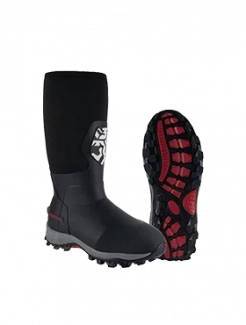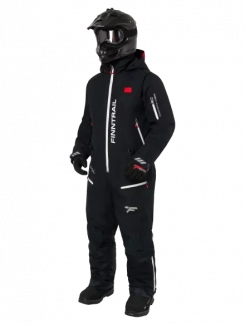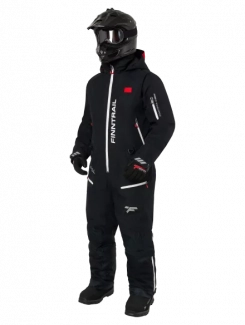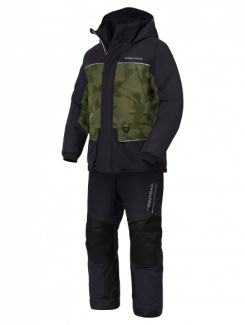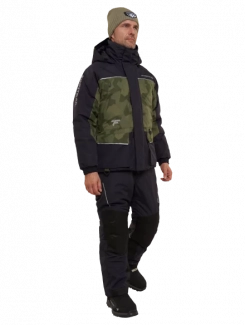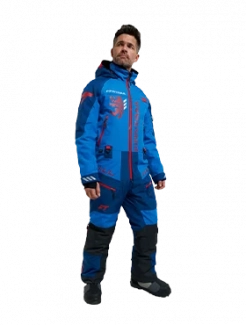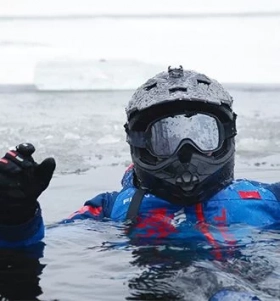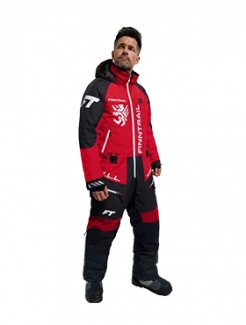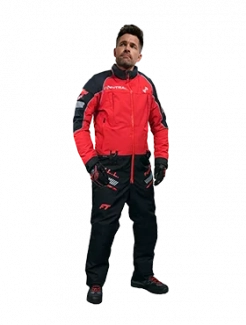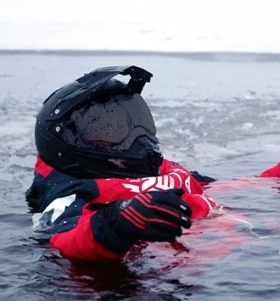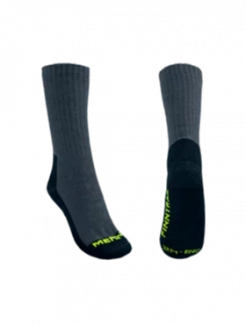Essential Ice Fishing Gear: What You Need to Start
Have you ever seen anglers in wintertime on their spots on a frozen lake or river? They usually drill holes, pull in fish, drink hot tea from their thermos bottles, and chat with other enthusiasts around them. If you've seen that picture before, you probably asked yourself, 'How did they start?' Don't worry, you're not the first to wonder how to begin ice fishing. This hobby is more beginner-friendly than it seems, and it's both easy and rewarding.
One of the most important factors in getting started is choosing the right beginner ice fishing gear. We believe that the right equipment defines everything: the catch, the pleasure, and the safety. It's not only about the ice fishing rod—what you wear and where you sit also matter. If you have an ice fishing gear list, preparing becomes much easier, and early mornings or sudden weather changes won't influence your fishing experience.

Clothing that Works on the Ice
Before you start picking the gear for ice fishing and looking for the ideal place to drill the ice, pay attention to the outfit you will wear. Some eager anglers may skip that step, and this is a bad decision, because you may end up heading home earlier than you thought. It is relatively easy to freeze during winter fishing, as your body is often in the same pose for hours. The cold seeps into every layer of clothing and through every gap. When you're active, reeling in a line or setting up a rod stand and shelter, you don't feel cold. But the moment you sit still and wait for a bite, that's when you start freezing.
The more comfortable you feel, the longer you can stay on the ice. So, remember to wear these:
-
Waterproof boots with thick soles. Once you step on ice, the cold seeps to your feet. Additionally, slip-resistant boots help prevent falls on icy surfaces.
-
Base and middle layers. Cotton or linen will not save you in winter. Instead, opt for thermal clothes, synthetic vests, and woolen sweaters.
-
Insulated jacket. The best ice fishing outerwear is the one that is specifically designed for fishing, snowboarding, or skiing.
Ice Fishing Essential Gear
To help you buy only the necessary equipment, here is a list of tools for successful fishing:
-
Manual or power ice fishing auger
-
Slush scoop
-
Ice fishing rod and reel
-
Special ice line that does not freeze in cold water
-
Various lures
Once you've purchased these tools, you can head to the nearest fishing spot and try your luck. A quality ice auger is essential, as it determines how quickly you can create a hole. For catching larger fish like pike, consider power augers that can easily drill 8-10 inch diameter holes through thick ice.
Now for the fun part—fishing! You'll need a specialized ice fishing rod that pairs with an ice fishing reel. Unlike regular rods, ice versions are much shorter, allowing you to sit directly in front of the hole and peer into the water below.
Jigs, live baits, and artificial lures are valuable when fishing is slow. In winter conditions, fish are often attracted to bright, colorful lures.
Electronics and Supporting Gear
Electronics are designed to make your life more comfortable and the fishing process more convenient. You don’t need everything from this list, but having this equipment will improve your comfort on the ice:
-
Fish finder or flasher
-
Headlamp, flashlight, or lantern
-
Underwater camera
-
Digital thermometer
-
GPS
-
Power bank
-
Heated gloves and socks
Have you spent hours fishing on a cold lake, waiting for a bite, but nothing happened? If you had an underwater camera or a fish finder, you would have a different outcome. The simplest cameras cost about $150, and they serve as your eyes underwater. Having one in your ice fishing gear bag is a wise decision. Also, a fish finder or flasher helps locate prime fishing spots by showing what’s happening under the ice — water depth, ice thickness, and fish, if any. Fish finders work in harsh weather conditions, though cameras may only function in temperatures above -20°С.
The temperature below and above the ice can differ by up to 30 degrees. And it's hard to estimate water temperature without a thermometer. However, if you have one, you can not only determine the temperature, but also find the best water temperature for catching a certain type of fish. For example, northern pike are most active at 2°С-6°С, while walleye prefer 1°C-4°C. In warmer water, they're less attracted to lures and swim deeper. For the best fishing experience, consider adding a thermometer to your gear.
On top of that, bringing an LED flashlight or a lantern is a smart move when you go fishing in the dark. It's also a safety measure that you'll never regret having.
Ice Fishing Accessories
If you have ever forgotten your gloves or a slush scoop at home, you already know that the smallest gear can ruin your mood and plans on a long fishing day. Accessories for ice fishing are not the first thing anglers buy in the bait and tackle shop, but they matter.
First, you need an ice fishing gear sled. It's a lifesaver for any serious ice angler. Walking from the car to the fishing hole while carrying all the gear by hand is not something you want to do. Second, a thermos with hot tea or cocoa will keep you warm and cheer you up. Third, a tackle bag is not just a storage tool. Experienced anglers often bring up to four different ice fishing rods - one for jigging, another for tip-up, and two spare rods for catching fish at different depths. Hauling all of them by hand is simply not practical.
Here are the essential accessories for ice fishing you should consider buying:
-
Ice fishing gear sled
-
Tackle bag
-
Seat pad or bucket
-
Thermos
Ice Fishing Safety Gear
Ice fishing can be dangerous, especially in spring or autumn when ice is thin, or when exploring remote spots with no one around to help. There is usually no cell signal on the ice, making emergency calls problematic. That's why bringing safety gear is essential. Remember to pack these items:
-
Safety kit
-
Flotation vest
-
Safety rope
-
Lantern
Ice Fishing Camping Gear
To extend your fishing experience, consider bringing an ice fishing shelter. This tent protects you from strong winds, snowfall, and sub-zero temperatures. Even with the best gear, your trip might not always go as planned. Being prepared with shelter accessories like a camp heater and a folding chair will make your fishing trip more comfortable, encouraging you to return for future outings.
Here's a checklist of essential camping gear for ice fishing:
-
Ice fishing shelter
-
Ice fishing shelter accessories
-
Camp heater
-
Camp stove
-
Water and a snack
-
Folding chair
Conclusion
Ice fishing can be an incredibly rewarding winter activity when you have the right gear. Starting with proper clothing and essential tools like an auger, specialized rod, and appropriate lures will set you up for success. As you gain experience, you can gradually expand your collection to include electronics, accessories, and camping equipment that enhance both safety and comfort.
Remember that safety should always be your top priority when venturing onto frozen waters. Never go ice fishing alone, especially as a beginner, and always inform someone about your location and expected return time.
With the right preparation and equipment, you'll be well on your way to enjoying peaceful days on the ice and the thrill of catching fish in winter conditions. So gather your FINNTRAIL gear, bundle up, and embrace this wonderful winter tradition!

